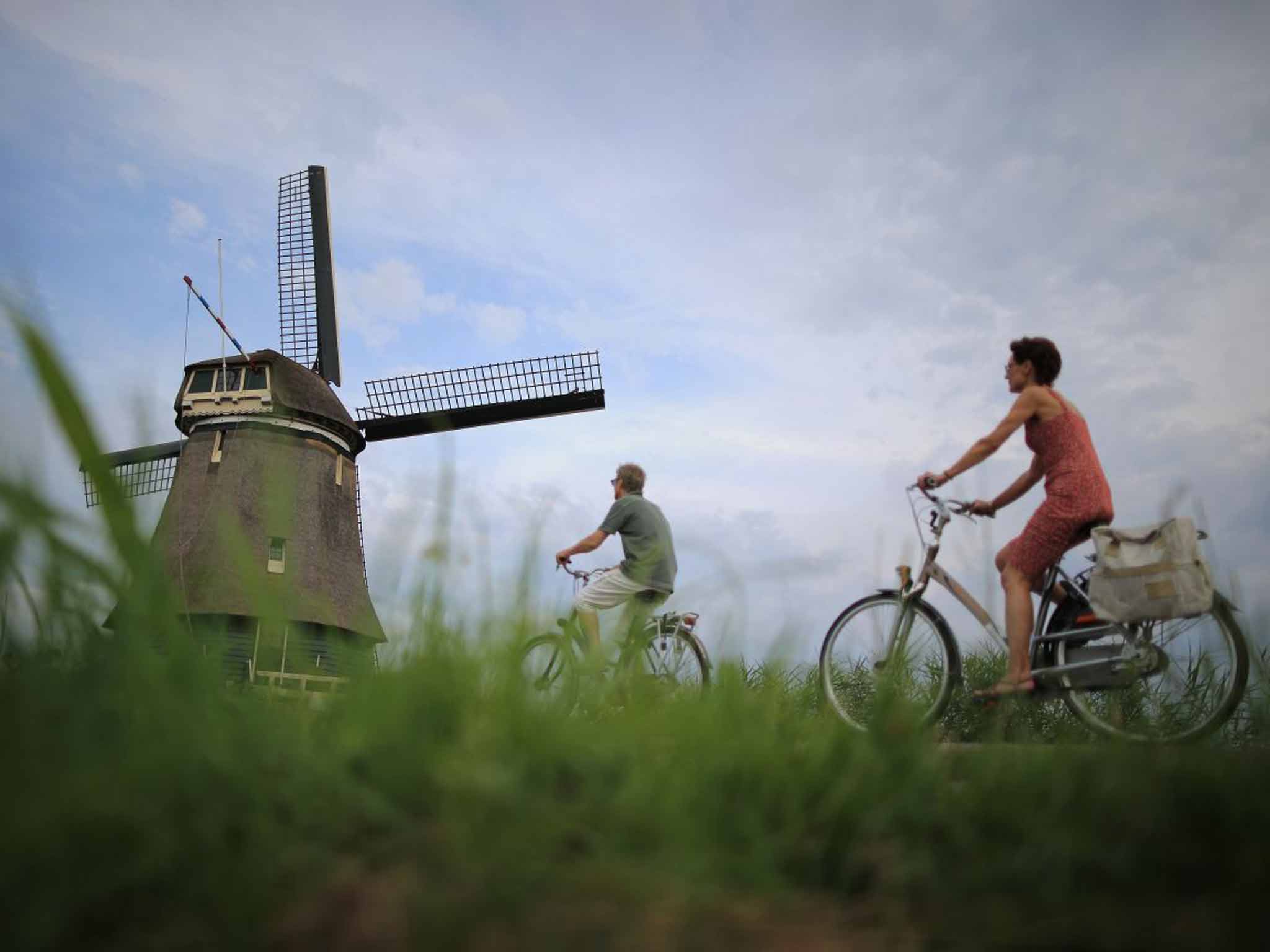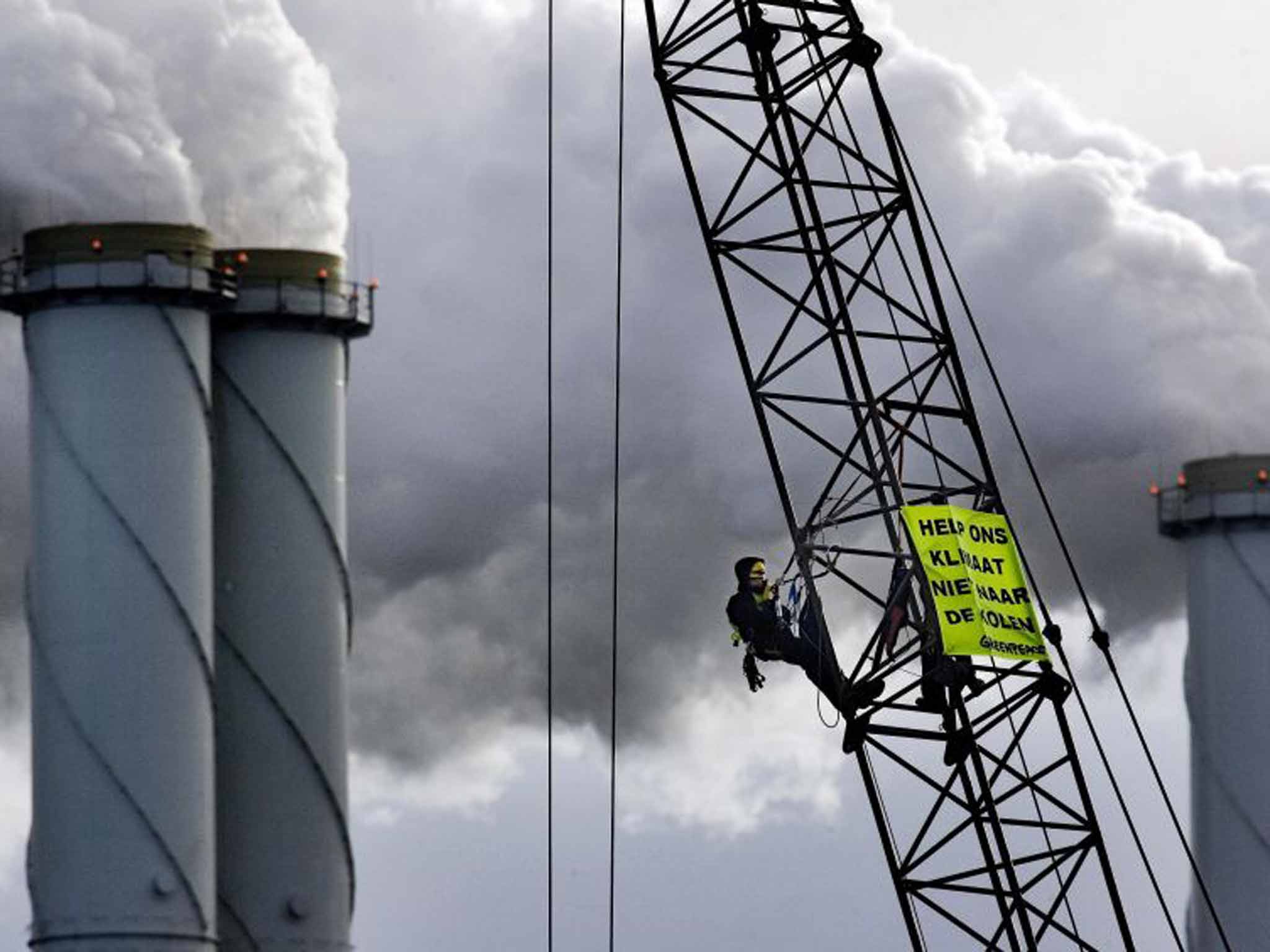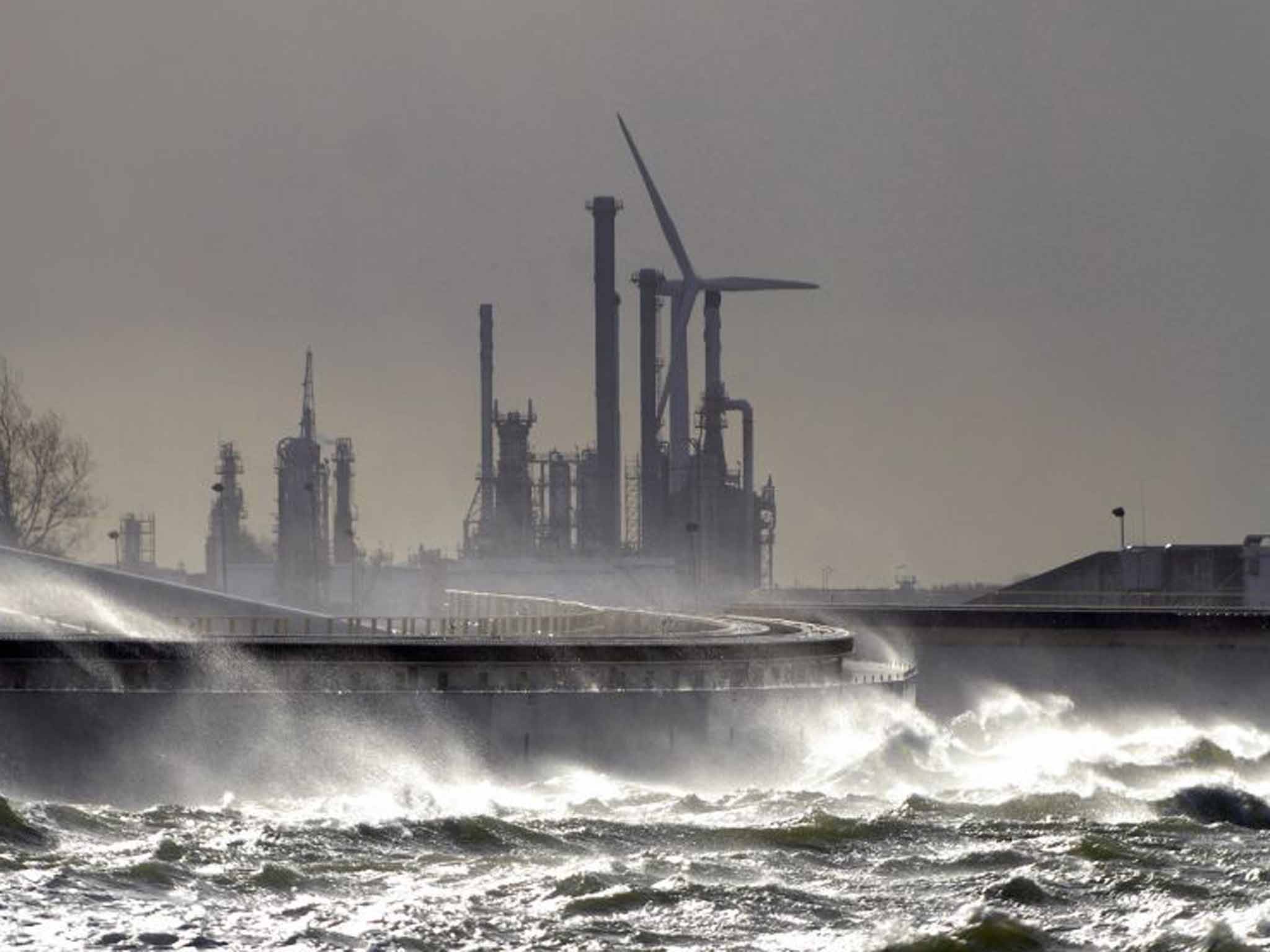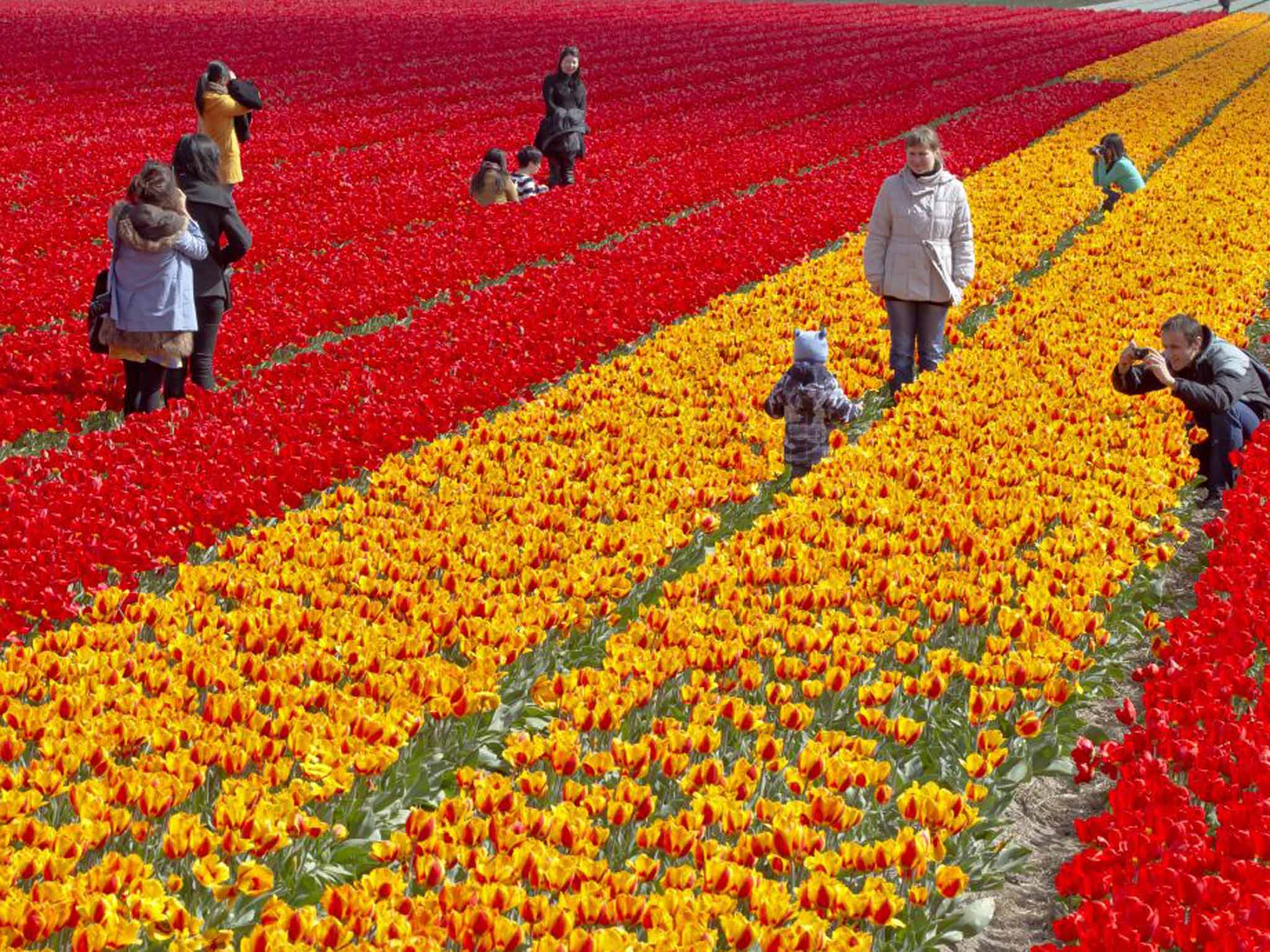How green is Holland? From carbon emissions to climate change
Holland has a dirty secret. To outsiders, it may seem a green idyll, where cycling and recycling are the norm. But scratch the surface, says Ben Coates, and you find a crowded, carbon-spewing, urban nation spectacularly addicted to fossil fuels

Your support helps us to tell the story
From reproductive rights to climate change to Big Tech, The Independent is on the ground when the story is developing. Whether it's investigating the financials of Elon Musk's pro-Trump PAC or producing our latest documentary, 'The A Word', which shines a light on the American women fighting for reproductive rights, we know how important it is to parse out the facts from the messaging.
At such a critical moment in US history, we need reporters on the ground. Your donation allows us to keep sending journalists to speak to both sides of the story.
The Independent is trusted by Americans across the entire political spectrum. And unlike many other quality news outlets, we choose not to lock Americans out of our reporting and analysis with paywalls. We believe quality journalism should be available to everyone, paid for by those who can afford it.
Your support makes all the difference.The hardscrabble north of Rotterdam, the Dutch city where I have lived for much of the past five years, is not one of the world's beauty spots. A grimy suburb of a sprawling industrial city, the area is crisscrossed by busy roads and motorways; its narrow streets packed with noisy trams, bars and kebab shops.
The city was bombed heavily in the war, and traditional red-brick townhouses are now heavily outnumbered by modern concrete buildings. In north Rotterdam, trees are seldom seen. Next door to my house, though, was a rare exception. My neighbours' garden was an oasis of green amid the grey. The fences wore thick jackets of ivy, the beds overflowed with shrubs and wildflowers, and a pair of tall fir trees filled with birds at sunset. All that changed, however, when new neighbours moved in last year. Within hours of obtaining the keys, the man of the house had busily set to work with a petrol chainsaw, tearing hungrily at the plants until nothing remained but a drab concrete patio surrounded by stumps. I gazed down in horror from my balcony, aghast at the nuclear winter that had descended next door. The neighbour saw me and hollered a friendly greeting. "Mooi, toch?" he shouted. "Beautiful, right? Much nicer than before!"
After a few years of living in the Netherlands, I shouldn't have been surprised by the cheerful Dutchman's behaviour. To the outside world, the Netherlands is generally assumed to be one of the most eco-conscious countries in Europe: a vaguely Scandinavian place filled with vegetarians and bottle banks, where liberal politics are mainstream and bicycles reign supreme.
Such stereotypes can irritate the Dutch, but there's certainly much about their country that is green. As the home of wind power, the Netherlands is packed with windmills, both of the ancient brick variety and of the skeletal modern kind. Recycling rates are impressively high, and Amsterdam – long designated the Most Liberal City in the World – is home to Greenpeace and a host of other eco-minded NGOs. Outside the capital, an extensive public transport network makes it possible to reach almost every corner of the country by train, bus and tram. The government even recently announced that, by 2018, it plans to run all the nation's trains using only wind-generated power. Culturally, too, the Dutch seem like natural environmentalists, with Calvinist roots that make them liable to frown on excessive consumption or waste. One won't find many gas-guzzling Ferraris or Hummers here.
On climate change, the Dutch also talk a good game. In a country where millions live behind dikes and sea walls, rising sea levels are not an abstract concern but an existential threat. Earlier this month, three Dutch judges went unexpectedly viral when they ruled that the government has a legal duty to cut emissions radically by 2020. The Dutch are also world leaders in climate-change mitigation; when floods loom in London or New York, engineers' phones in Amsterdam and the Hague start ringing. And then, of course, there are the bicycles. With miles of traffic-free cycle lanes, the Netherlands is a pedal-phile's dream and – according to the government – the only country in Europe with more bikes than people.
However, closer inspection reveals that the Netherlands is hiding something of a dirty secret: it's actually not very green at all. According to the World Bank, Dutch carbon emissions are, per capita, among the highest in Europe – almost double those of France, and about one and half times those of Britain. Despite the authorities' bold rhetoric on climate change, the Netherlands is falling well short of Kyoto targets to reduce emissions. Despite all the famous windmills, the share of energy coming from renewables lags behind that of neighbouring Germany and Denmark. The use of coal to produce electricity is soaring. And despite all those bicycles, carbon monoxide emissions in the Netherlands are (adjusted for population) higher than in the UK.

A disappointed eco-tourist might well ask where it all went wrong. Part of the blame lies with the country's high population density. The Netherlands remains by far the most crowded country in northern Europe, with some 17 million people squeezed into an area about half the size of Scotland. Population density, at 500 people per square kilometre, is nearly double that of the UK, and four times that of France. Small Dutch homes tend to be energy efficient, but the sheer number of people creates environmental pressures that don't exist in emptier areas. Rotterdam will never be as clean and green as Coniston or Cornwall.
The crowdedness of the Netherlands also means that green spaces are in short supply. Ancient Dutch towns such as Delft and Leiden are heartbreakingly beautiful, but in between them lie miles of formless urban sprawl. Tourists buy postcards of green fields filled with dairy cows, but rarely see the infinite drive-through restaurants, warehouse stores, office parks, motorways and petrol stations that blight much of the country. Ancient Holland was said to have been named for its abundance of "holtlant" (wooded land), but these days there's not much of it left.
Another problem concerns transportation. After the devastation of the Second World War, the Dutch famously embraced cycling as a new national religion, investing millions in cycle lanes and other biking infrastructure. Less famously, they also fell in love with the car, embracing a car-loving, Americanised lifestyle exemplified by the slogan of the post-war Marshall Plan: "You Too Can Be Like Us." There might not be many Ferraris, but per capita, the Dutch own more cars than the Brits. The Netherlands has one of the most dense road networks in Europe, and motorways linking major cities are just as gridlocked in rush hour as the M25. Perhaps the biggest problem, though, is economic. Well into the information age, the Dutch economy remains dependent on the kind of industries that are about as popular with the green lobby as an Exxon Mobil fundraiser for Donald Trump.
Energy, petrochemicals, refining and shipping are all major earners. Gas production has recently been curbed after earthquakes in the north of the country, but one great irony remains: the generous, liberal Dutch welfare state is funded largely by fossil fuels. Rotterdam, which is by far the largest port in Europe, is an ecological disaster zone. From my home, I can drive 25 miles to the coast through an almost continuous strip of chemical refineries, docks and factories. At night, the beautiful North Sea beaches around Hook of Holland are illuminated by gas refineries which flare like Roman candles, casting amber light over hundreds of giant cargo ships chugging their way to China.
Further north, endless acres of heated plastic greenhouses grow tulips and vegetables for export – an energy-hungry, pesticide-thirsty industry that (according to researchers from Cranfield University) generates almost three kilograms of CO2 for every rose stem grown. Further north still comes Amsterdam's Schiphol airport, one of the largest in Europe. The Dutch tourism industry owes a huge debt to the budget airlines that flock to the country, but more than a thousand flights per day add up to a fearsome carbon footprint. Even the famous black-and-white dairy cows turn out to be an environmental liability; emitting gases that help pump Dutch methane emissions to more than double the level of nearby Belgium or Denmark.
All this might not matter were the Dutch determined to change their ways. But travel around the Netherlands and you soon realise that many people's attitudes are also not very green. The Dutch Green Party might have four seats in Parliament, but proposals to build new wind farms both offshore and inland have sparked vociferous protests. Surveys show that in 2009, almost half of Dutch people thought that the seriousness of climate change had been exaggerated. More recently, Dutch politics has taken a pronounced rightward turn. The centre-right government of Cameron-alike Prime Minister Mark Rutte is coming under pressure from the flaxen-haired populist Geert Wilders, whose party regularly denounces what it calls "the sinister green-windmill subsidy complex". Al Gore will probably get a warm welcome at the international climate change talks in Paris this December, but if he heads north to Rotterdam, he might well be run out of town.
This scepticism is probably rooted in the rather unusual view that the Dutch take of the natural environment in general. To many Brits, a love of Mother Nature comes with their mother's milk. Our romanticised ideal of our country is inherently rural: Little Britain is a land of Wordsworthian dales, unpopulated valleys and ramblers idling along overgrown country lanes. The Germans, too, have long tended to exalt the role of the Alps, the Black Forest and the green-hatted Bavarian huntsman in their culture, while the French are famously sentimental about rustic rural lifestyles. The Dutch, though, have very different ideas about how man and nature should co-exist.

In a country with limited green space, many people – my neighbour included – have little affinity with anything resembling wilderness. Dutch pleasures are largely urban, and most people live essentially urban or suburban lifestyles. When I mentioned this to Dutch people I met while travelling around the country, I was repeatedly told that I was wrong and that I need only visit the Groen Hart or Green Heart of the Netherlands – an undeveloped area of land between the major cities, akin to a rolled-up version of Britain's Green Belt.
Dutch people talked about the region in reverent tones, as if it were one of Europe's last great wildernesses. However, cycling around looking for this utopia, I was disappointed to find that most of it was practically suburban, filled with roads, railways, petrol stations and even sizeable towns. Dutch national parks turned out to be similarly developed; crisscrossed by tarmac paths, fences, roads and railway lines. Ninety per cent of Dutch people live in urban areas. To many of them, the countryside is another country.
Dutch attitudes to the environment have also been shaped by their battles against the rising tides. Four hundred years ago, much of the Netherlands was under water, and much of the rest was swampy marshland. "The Great Bog of Europe", a visiting Englishman called it. From the 16th century onwards, though, the Dutch embarked on an extraordinary project to increase the size of their country. Thousands of water-pumping windmills were built, canals dug and vast expanses of grassy polder reclaimed. Whole cities were built on land that once lay at the bottom of sea, along with a major airport on the site of an accident-prone lake known as the "Ship-hole". These efforts continued well into modern times: in the 1950s, major flooding throughout the south of the country spurred the government to invest billions in a nationwide network of dams, sea walls and floodgates. Today, huge swathes of the Netherlands consist of land reclaimed from the sea. More than a quarter of the country lies below sea level, and with sea levels rising, the authorities face a Sisyphean task of maintaining and extending the dikes. The national flood defence budget now runs to more than €4bn (£2.9bn) a year.

This history has had a profound impact on the way Dutch people see the natural world. My neighbour's view of nature as an unruly beast was not unusual. To many Dutch, the environment is not something that needs to be protected, but something from which people need to be protected. Mother Nature is not a life-giving force to be cherished, but a menace that needs to be tamed. In that context, it is hardly surprising that things a Brit might think of as beautiful – a wild country garden, a tangled hedgerow, a wet and windy beach – are viewed by many Dutch as an affront to common sense and discipline.
In the Netherlands, trees are neatly trimmed, wildlife kept behind fences, parks laced with smooth tarmac footpaths, and beaches enjoyed from behind high glass screens to protect against the wind. One Eurobarometer survey found that 25 per cent of Dutch people said that the state of the environment had no impact on their quality of life – the second-highest proportion in Europe. The Dutch were also less likely than other nationalities to prioritise keeping their homeland "green and pleasant" or "protecting nature". When it comes to conservation, the warm and friendly Dutch can be remarkably hard-nosed and cold-hearted.
Compared with much of the rest of the world, though, the Netherlands still has an enviable environmental record. Countries such as Britain could learn much from the Dutch experience of flood protection and land management, and their love of cycling and recycling. But the Netherlands' reliance on heavy industry and unromantic attitudes to conservation mean that to hold it up as an ecological benchmark is misguided. Chainsaw-wielding neighbours are not the exception but the norm. The Kingdom of Orange is not actually very green.
'Why the Dutch Are Different: A Journey into the Hidden Heart of the Netherlands' by Ben Coates (Nicholas Brealey, £10.99) is published on 24 September. Ben will be speaking at the Dutch Centre, 7 Austin Friars, London EC2 NHA, on 13 October at 7pm
Join our commenting forum
Join thought-provoking conversations, follow other Independent readers and see their replies
Comments